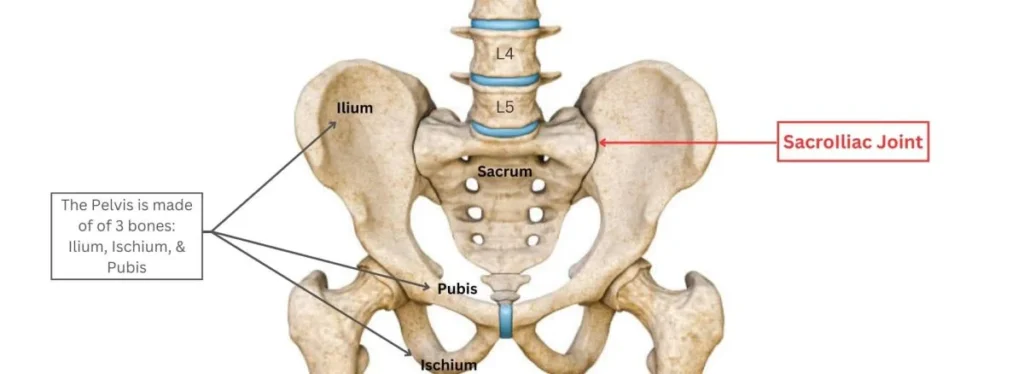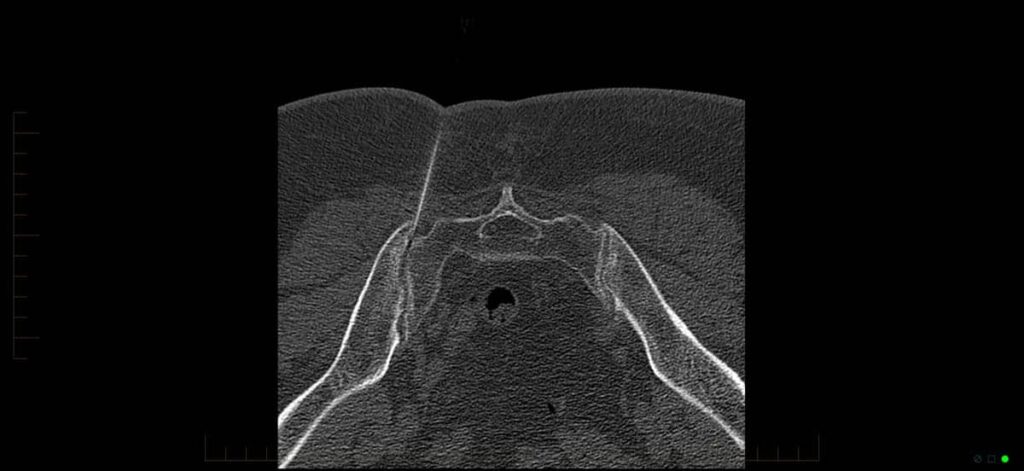Common Conditions
Sacroiliac Joint Pain
Sacroiliac joint pain refers to discomfort originating from the sacroiliac (SI) joints, which connect the lower spine to the pelvis. These joints play a key role in supporting the weight of the upper body and providing stability during movement. Arthritis, dysfunction (including hypermobility) or inflammation in the SI joints can cause localized pain in the lower back, buttocks, or even radiate to the legs, often mimicking other conditions including sciatica.
What causes sacroiliac joint pain?
Sacroiliac joint pain can arise from several factors, including:
- Injury or trauma: A fall, car accident, or other impacts can damage the SI joints.
- Arthritis: Conditions including osteoarthritis or ankylosing spondylitis can cause inflammation or degeneration of the SI joints.
- Pregnancy: Hormonal changes and weight gain during pregnancy can increase stress on the SI joints, as they prepare for childbirth.
- Repetitive stress: Activities or movements that strain the SI joints, such as heavy lifting or running, can lead to pain.
- Leg length discrepancy: Uneven leg lengths can place uneven pressure on the SI joints, causing discomfort over time.
- Infection or inflammation: Although rare, infections or inflammatory conditions may affect the SI joints.
- Hypermobility: It is thought that individuals with lax ligaments do experience more SIJ pain.

Common symptoms of sacroiliac joint pain
The symptoms of sacroiliac joint pain can vary but often include:
- Localized pain: A sharp, aching, or burning sensation in the lower back or buttocks, often on one side.
- Radiating pain: Pain that extends to the thighs, groin, or upper legs, resembling sciatica.
- Worsening pain with activity: Activities like sitting, standing for long periods, climbing stairs, or twisting may aggravate the pain.
- Improved pain with rest: Lying down or avoiding certain movements may provide relief.
- Stiffness: A feeling of tightness or reduced flexibility in the lower back or hips.
Diagnosis of sacroiliac joint pain
Diagnosing sacroiliac (SI) joint pain involves a combination of clinical evaluation and diagnostic testing. A doctor will begin by asking about your symptoms, such as lower back or buttock pain, and how they are affected by sitting, standing, or walking. A physical examination may include specific movements or pressure tests designed to reproduce SI joint pain.
Because SI joint pain can mimic other conditions, imaging tests such as X-rays or MRI scans may be used to rule out disc or spinal issues. However, these scans may not always show clear signs of SI joint injury or dysfunction.
To confirm the diagnosis, a diagnostic injection of local anaesthetic (+/- corticosteroid) into the SI joint may be performed and is considered the gold standard for diagnosis. Significant pain relief following the injection strongly suggests the SI joint is the source of the pain.
Management of sacroiliac joint pain
Treatment for sacroiliac joint pain focuses on relieving pain and restoring joint function. Options include:
- Physical therapy: Exercises to strengthen the muscles supporting the SI joints, improve flexibility, and stabilize the pelvis.
- Medications: Over-the-counter anti-inflammatory drugs (e.g., ibuprofen) or prescription pain relievers may help manage symptoms.
- Injections: Corticosteroid injections directly into the SI joints can reduce inflammation and provide temporary relief.
- Lifestyle modifications: Maintaining proper posture, avoiding activities that worsen the pain, and using supportive devices like belts or braces can help.
- Radiofrequency ablation: In some cases, a minimally invasive procedure using heat to block pain signals from the nerves around the SI joint may be considered.
- Surgery: Rarely, surgery may be necessary if other treatments fail, such as SI joint fusion.


